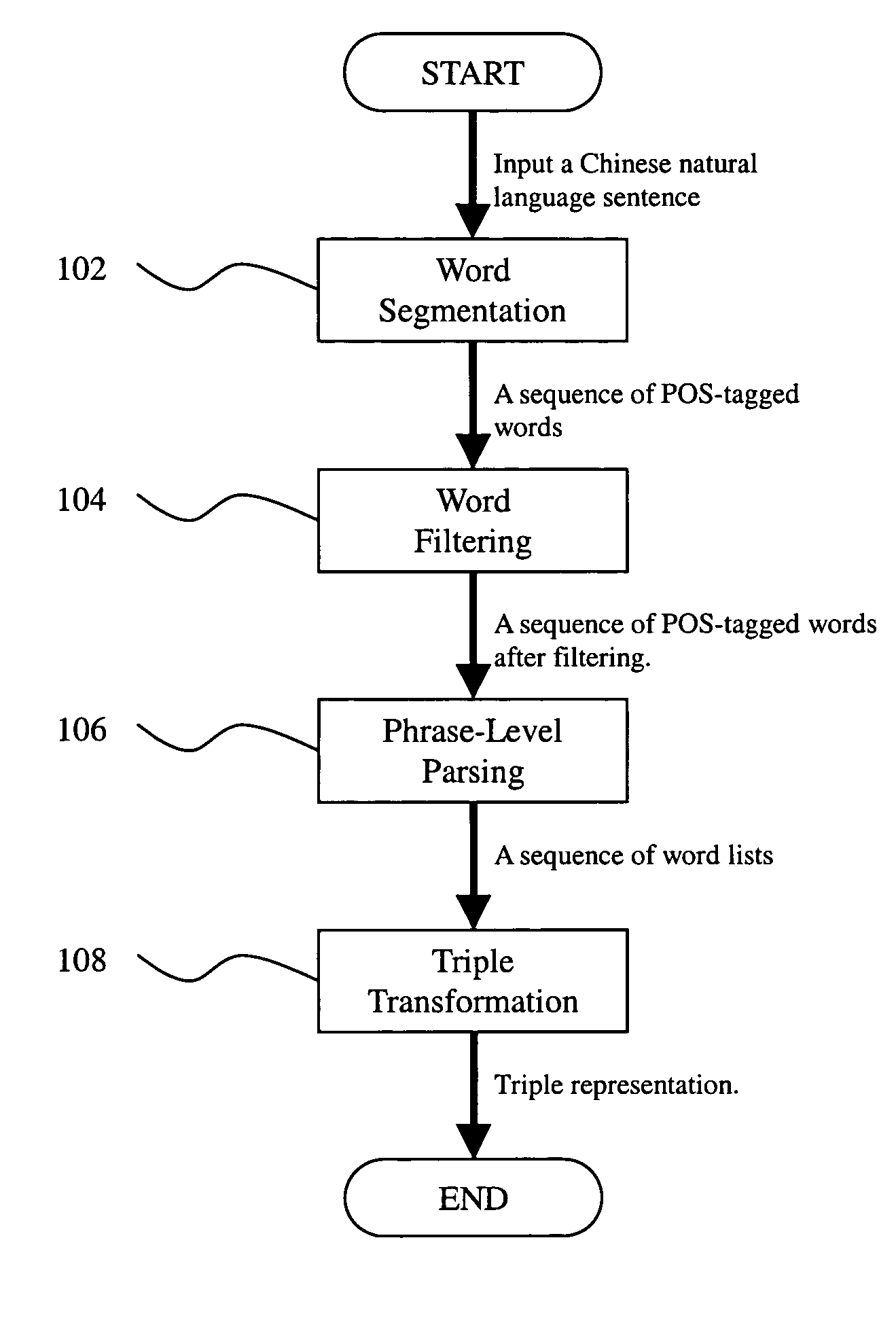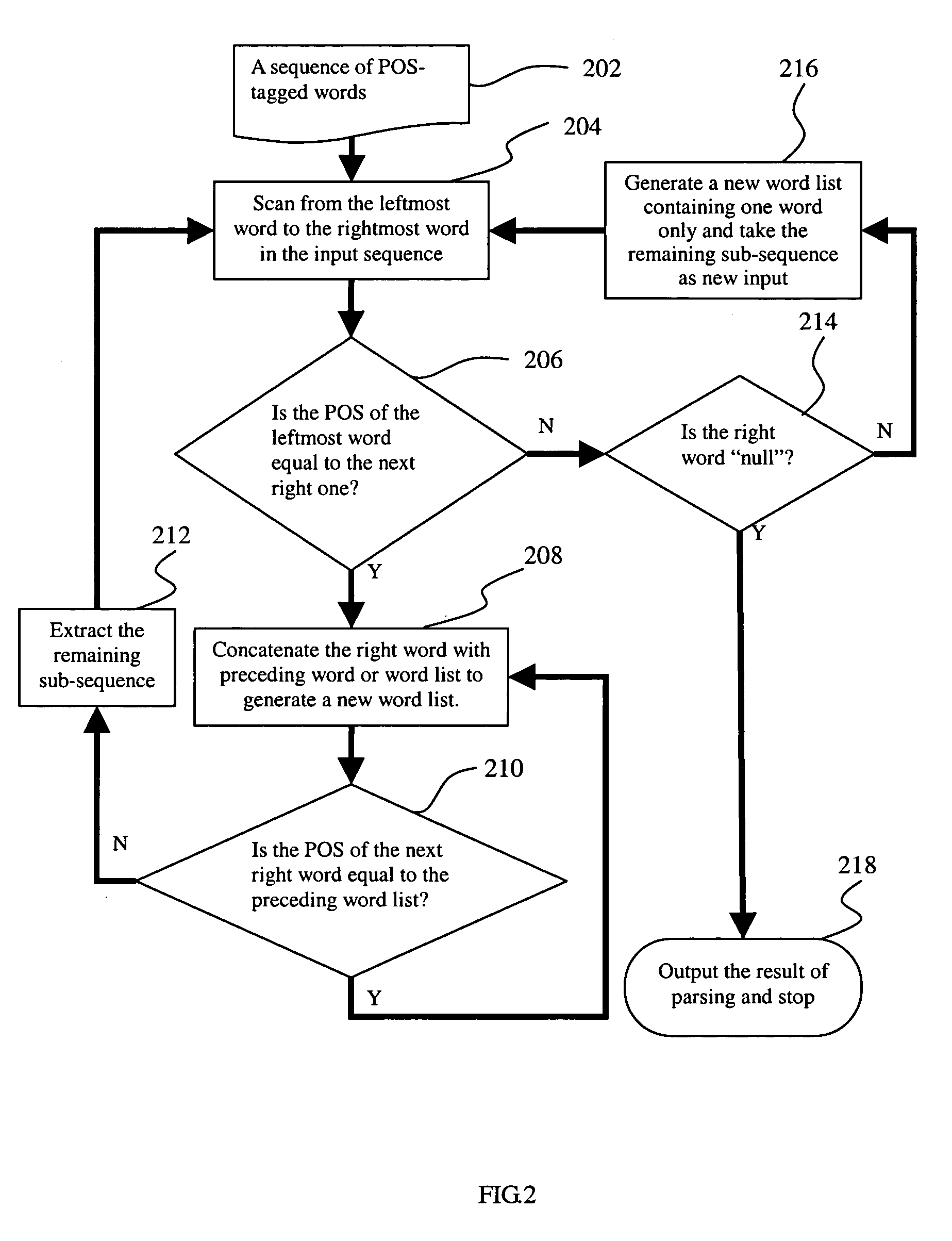Method for processing Chinese natural language sentence
a natural language and sentence technology, applied in the field of processing chinese natural language sentences, can solve the problems of limiting the parsing of smaller constituents and not delivering full syntactic analysis
- Summary
- Abstract
- Description
- Claims
- Application Information
AI Technical Summary
Problems solved by technology
Method used
Image
Examples
Embodiment Construction
[0023] The invention of the method for processing Chinese sentences is divided into several steps as shown in FIG. 1. First the step 102 is to divide a sentence into a sequence of POS-tagged words according to the rule of the longest word prioritized first. In the step 104, the sequence of words is filtered out the words having POS other than Noun, Verb, and Preposition. The step 106 is to parse smaller constituents such as noun phrases or verbal phrases. In the step 108, these constituents are grouped and transformed into Triple representation.
[0024] The rule of the longest word prioritized first is a simple and easy-to-implement rule, which is described as follows: Given a lexicon having POS information and a Chinese sentence, the leading sub-strings are compared with the entries in the lexicon. Then the longest word in the matched sub-strings is selected and the remaining sub-string becomes the string to be matched in the next round of matching until the remaining sub-string is ...
PUM
 Login to View More
Login to View More Abstract
Description
Claims
Application Information
 Login to View More
Login to View More - R&D
- Intellectual Property
- Life Sciences
- Materials
- Tech Scout
- Unparalleled Data Quality
- Higher Quality Content
- 60% Fewer Hallucinations
Browse by: Latest US Patents, China's latest patents, Technical Efficacy Thesaurus, Application Domain, Technology Topic, Popular Technical Reports.
© 2025 PatSnap. All rights reserved.Legal|Privacy policy|Modern Slavery Act Transparency Statement|Sitemap|About US| Contact US: help@patsnap.com



